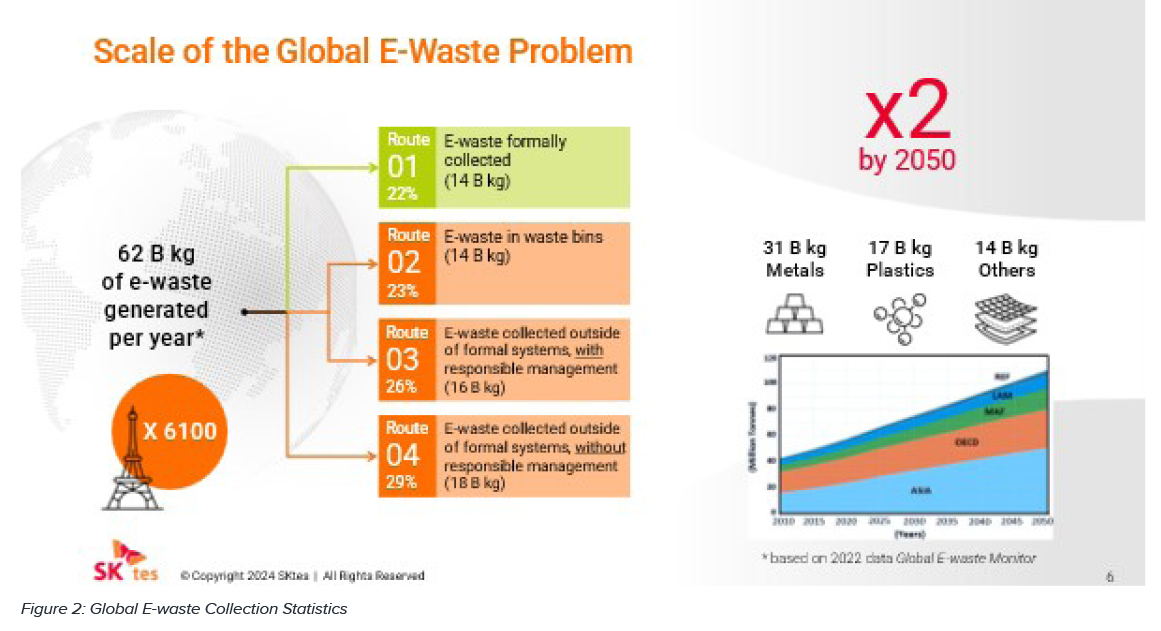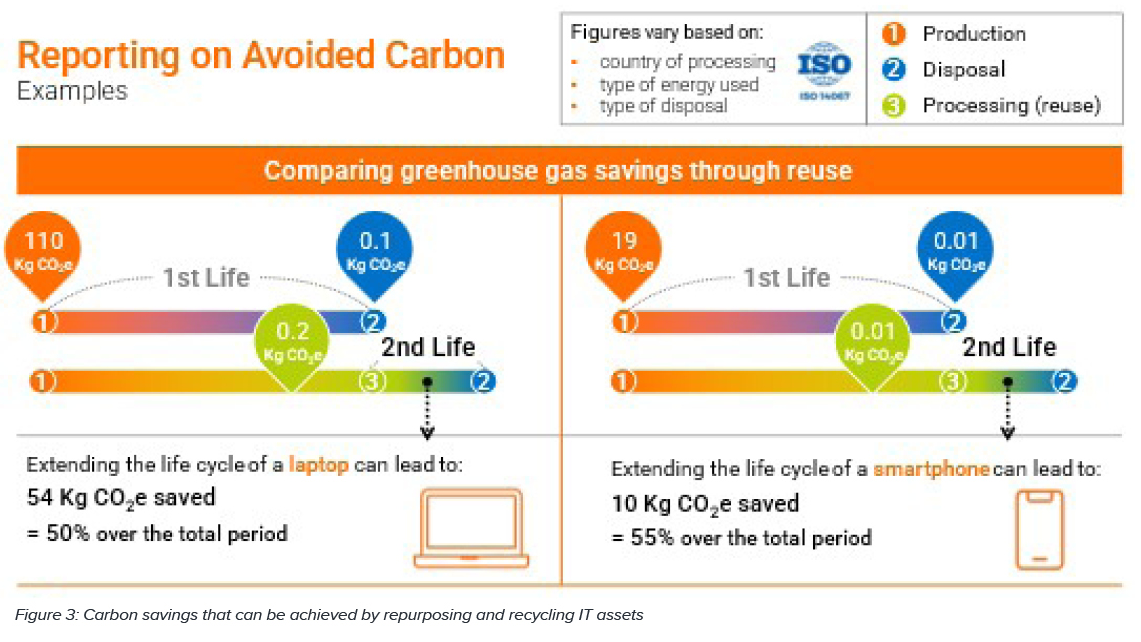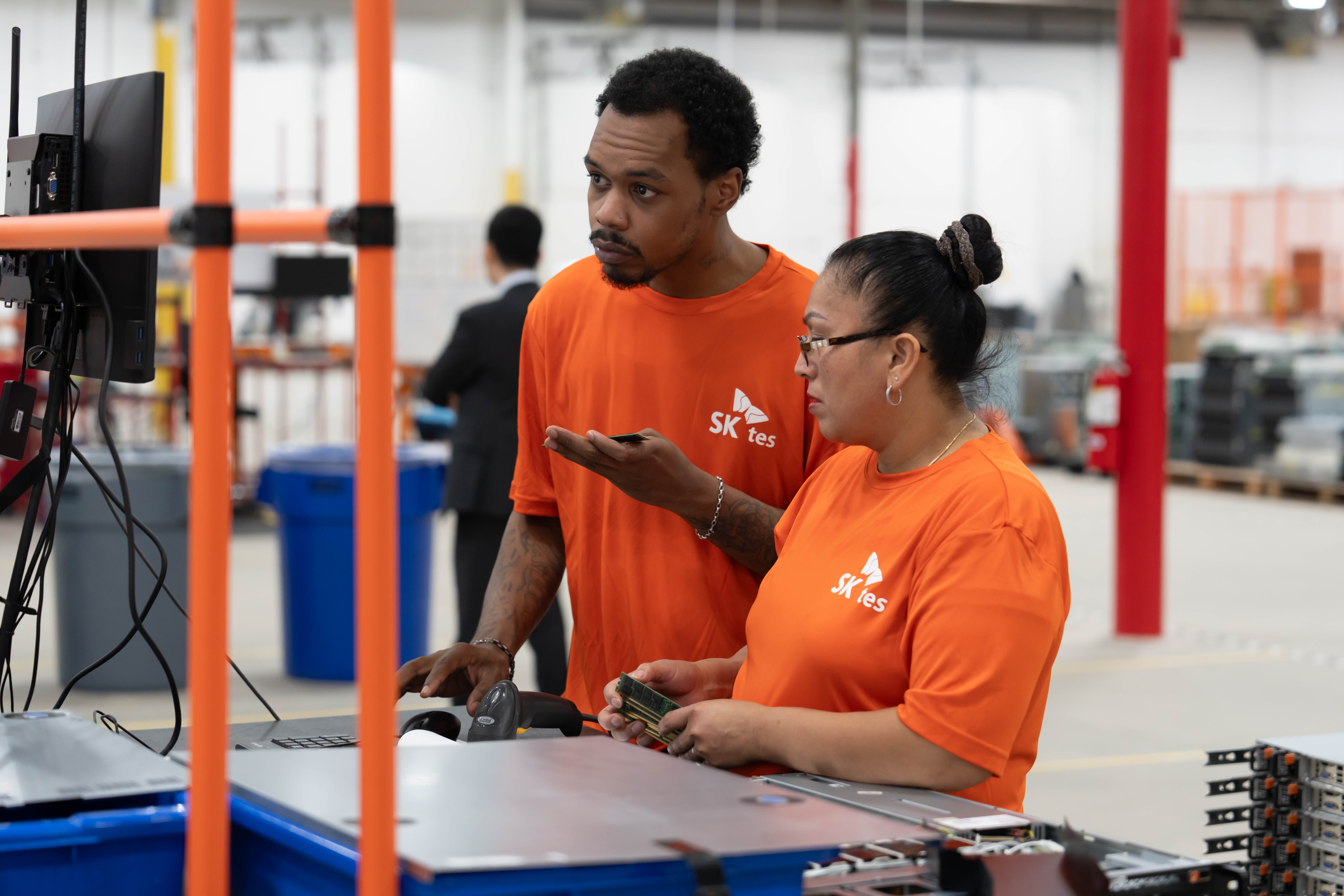As the climate crisis intensifies, achieving a net-zero carbon future has become a critical objective for businesses worldwide. In recent years, the push for sustainability has seen a significant number of large corporations publicly setting ambitious objectives, particularly aiming to achieve net zero emissions. As of 2023, over 1,000 major companies, including industry giants like Apple, Microsoft, and Unilever, have committed to net zero targets , reflecting a growing recognition of their environmental responsibilities
Information Technology Asset Disposition (ITAD) will have a role to play in advancing sustainability efforts by reducing Scope 3 emissions, meeting sustainability targets, and fostering a circular economy. By responsibly managing the lifecycle of IT assets, companies can significantly reduce their carbon footprint, align with regulatory requirements and contribute to a more sustainable future.
There has been a notable increase in the number of companies reporting on their sustainability objectives and progress. This surge is driven not only by voluntary commitments but also by regulatory requirements. For instance, the European Union’s Corporate Sustainability Reporting Directive (CSRD) mandates comprehensive sustainability disclosures, compelling both new and established companies to adopt transparent reporting practices. Consequently, the corporate landscape is witnessing a transformative shift towards more sustainable operations, driven by both regulatory frameworks and voluntary corporate initiatives.
Introducing an IT strategy that emphasizes circularity, lifecycle extension and sustainable technology use is essential for companies looking to achieve net-zero carbon emissions. A sustainable IT strategy should optimize product longevity, reuse, refurbishment, and recycling opportunities, ensuring that electronic devices do not end up in landfills prematurely. By leveraging circularity, companies can significantly cut down the carbon emissions associated with IT hardware.

The Environmental Impact of Technology Use
The environmental and social impacts of technology production are significant. The production phase, particularly for electronics, is highly emissions-intensive, contributing to global environmental issues such as ecosystem degradation, resource scarcity, and climate change. For instance, the manufacturing of a typical laptop can account for around 85% of its total embodied emissions, with only 10% of emissions arising from the use phase. Key components like motherboards, screens, and storage drives are substantial contributors to these emissions.
The production of electronics also raises social concerns. Human rights violations are a real risk in the supply chain, particularly in artisanal mining where child labor is often exploited. Workers, including children, in these mining operations face hazardous conditions that pose significant health and safety risks. The extraction of raw materials, such as cobalt and rare earth elements, often occurs in regions lacking stringent labor regulations, exacerbating these human rights abuses.
The ripple effects of technology production extend further, impacting local communities and ecosystems. Resource extraction can lead to severe ecosystem degradation, affecting both biodiversity and the livelihoods of indigenous populations. The scarcity of critical materials can contribute to geopolitical tensions and conflicts, as nations vie for control over these valuable resources. Addressing these multifaceted challenges requires a concerted effort towards sustainable production practices, ethical sourcing of materials, and robust regulations to protect both the environment and human rights.
Outside of the production and use phases of electronics, the inappropriate management of e-waste has become a pressing global issue, exacerbated by the rapid pace of technological advancement. According to the 2024 Global E-waste Monitor , a staggering 62 billion kilograms of e-waste are generated worldwide each year. To put this into perspective, this amount is equivalent to 6,100 times the weight of the Eiffel Tower. Despite the massive volume, only 22% of this waste is formally collected and recycled. This figure underscores the glaring deficiencies in global e-waste management systems.
The consequences of such mismanagement are far-reaching. Of the 62 billion kilograms of e-waste, 16 billion kilograms are collected outside of formal systems, even in countries with relatively developed e-waste management infrastructures. This e-waste often ends up in informal recycling sectors where environmental and health regulations are either lax or non-existent. Moreover, a significant portion of this waste makes its way through uncontrolled transboundary movements, traveling from high-income to middle and low-income countries. These regions often lack the capacity to manage the influx safely, leading to environmental degradation and health risks for local populations.
The situation is expected to worsen, with e-waste generation predicted to double by 2050, compared to 2020 levels. This alarming trend calls for urgent and coordinated international efforts to improve e-waste management practices. Strengthening formal recycling systems, increasing consumer awareness around returns, incentivizing returns, increasing collection options and investing in sustainable e-waste processing technologies are critical steps that need to be considered.

Circular Economy Principles
The circular economy presents a transformative approach to tackling climate change, particularly within the electronics industry. By focusing on circulating materials, this model aims to retain the embedded energy in products, thereby reducing the demand for new production and the associated emissions. The traditional linear economy, characterized by a 'take, make, dispose' model, contributes significantly to environmental degradation and resource depletion. In contrast, a circular economy emphasizes designing out waste and pollution, keeping products and materials in use, and regenerating natural systems.
A key aspect of this approach is extending the lifecycle of electronic products. This can be achieved through prioritizing strategies such as reusing, repairing, refurbishing and remanufacturing. By doing so, the energy and resources invested in the initial production are maximized, mitigating the need for constant manufacturing of new devices. Moreover, it helps to curb the extraction of raw materials, which is often energy-intensive and environmentally damaging. The Ellen MacArthur Foundation highlights that a staggering 45% of global emissions are linked to the production , use, and disposal of products and services. Therefore, transitioning to a circular economy in electronics can play a crucial role in reducing these emissions.
How ITAD contributes to your Sustainability Strategy
Integrating IT circularity into your company's sustainability strategy is essential to promoting environmental stewardship and reducing your ecological footprint. Establish policies that enforce circular practices when it comes time to decommission equipment. Ensure that devices are either refurbished for secondary use or properly recycled and partner with IT asset disposition (ITAD) and e-waste recycling companies that adhere to high environmental and ethical standards and provide comprehensive sustainability reporting showing the carbon avoidance your ITAD program is contributes.
Repurposing and recycling IT assets contributes to the reduction of Scope 3 emissions. Scope 3 emissions encompass all indirect emissions that occur within a company’s value chain, including those from purchased goods and services and waste disposal. By increasing equipment reuse and recycling companies can significantly mitigate their environmental footprint.
Extending the life cycle of electronics devices, such as laptops and smartphones, presents a significant opportunity to reduce environmental impact. For instance, prolonging the use of a laptop can result in approximately 54 kgs of embodied carbon savings, which equates to a 50% reduction over the average use time of the device. By keeping a laptop in use for a longer period, we can delay the need for new production, thereby conserving raw materials and reducing greenhouse gas emissions associated with the production processes.
Similarly, extending the life of a smartphone through reuse can lead to a reduction of around 10 kgs of embodied carbon, translating to up to a 55% reduction over the device’s average lifetime. Smartphones, like laptops, require significant energy and resources to produce. By reusing and refurbishing smartphones we can mitigate the environmental toll of frequent upgrades and disposals. This practice lessens the demand for new materials and reduces e-waste.
The extension of electronic device life cycles is a practical and impactful strategy for minimizing carbon footprint. Encouraging practices such as repair, refurbishment, and reuse can contribute significantly to sustainability efforts. By making lifecycle extension through reuse part of your corporate sustainability strategy the environmental impact of technology use can be reduced.
Sustainable IT asset disposition (ITAD) directly contributes to several of the United Nations Sustainable Development Goals (SDGs) 10, 12, and 13. SDG 10 aims to reduce inequality within and among countries, which can be supported by providing refurbished IT equipment to underserved communities, thus bridging the digital divide. SDG 12 focuses on responsible consumption and production, which is addressed by promoting the reuse, refurbishment, and recycling of IT assets. SDG 13 targets climate action, and sustainable ITAD practices help reduce Scope 3 emissions—those indirectly generated in the value chain—by ensuring that old equipment is reused or recycled instead of being sent to landfills.
Beyond the environmental benefits, sustainable IT practices offer additional advantages such as enhanced data security, cost savings, and compliance with Environmental, Social, and Governance (ESG) criteria and regulatory standards. Proper decommissioning of IT equipment ensures that sensitive data is securely erased, protecting organizations from data breaches. Moreover, the reuse and recycling of IT assets can lead to significant cost reductions by avoiding the purchase of new equipment. Lastly, adhering to sustainable practices boosts an organization's reputation, satisfying both customers and investors who increasingly prioritize sustainability and ethical practices. By integrating circular principles into IT asset management, suppliers and organizations can make substantial strides in achieving a more sustainable and equitable future.

Do You Know What’s Happening to Your IT Assets?
Some businesses implement robust IT asset management (ITAM) programs to track and manage their equipment throughout its lifecycle, including its retirement. These programs ensure that retired IT assets are disposed of in an environmentally responsible manner, through partnerships with certified ITAD companies who follow stringent guidelines for data destruction and material recovery. This not only helps in mitigating environmental impact but also ensures compliance.
However, not all businesses have such comprehensive measures in place. Many companies lack visibility into the final disposition of their retired equipment. In some cases, old equipment may end up in landfills or be improperly handled by third-party vendors, raising concerns about environmental harm and data security breaches and contributing to the global e-waste challenge.

For global businesses operating in multiple international locations, it can be challenging to track and manage what is happening with their IT assets. When a business allows each country or business unit to independently source their ITAD services without a standard set of processes problems can arise. Lack of consistency can lead to risk, vulnerability and missed opportunities. Many organizations running de-centralized programs lack visibility, meaningful reporting and the chance to reduce their carbon footprint.
Ultimately, responsible management of retired IT equipment is not just an environmental and regulatory issue, but also a matter of corporate responsibility and reputation. Businesses that prioritize sustainable and secure disposal practices can benefit from reduced risks, improved sustainability metrics, and enhanced trust from customers and stakeholders. By taking proactive steps to manage their retired IT assets responsibly, companies can contribute to a more sustainable future while safeguarding their data and brand integrity.
SK tes ensures that businesses can responsibly manage their electronic waste. Serving clients in over 100 countries, we handle the processing of more than 6 million assets annually. Our ambitious mission is to repurpose and recycle 1 billion kilograms of electronics by 2030, significantly reducing the environmental impact of electronic waste.
Our approach to extending the lifecycle of assets involves a comprehensive strategy that includes reuse, refurbishment, repair, and parts harvesting. By reusing equipment, we help our clients delay or reduce the need for new equipment production, thereby achieving substantial carbon avoidance. This not only benefits the environment but also supports our clients in meeting their sustainability goals. The process of calculating avoided carbon emissions involves mapping the carbon footprint associated with the entire lifecycle of technology assets—from manufacturing and use to transport and end-of-life management.
Selecting an ITAD provider with a low carbon footprint can further enhance a company’s sustainability profile. ITAD companies should be equally committed to reducing their own carbon footprint. Reducing operational emission intensity of the ITAD process will further increase carbon savings associated with repurposing. Companies should be demonstrating that they are transitioning to renewable energy sources, optimizing transportation logistics, and ensuring that e-waste is processed responsibly.
At SK tes, we are creating a sustainable future by minimizing electronic waste and promoting the responsible use of technology. Our services ensure that valuable resources are conserved, and environmental impacts are mitigated. By partnering with us, organizations can contribute to a greener planet while optimizing the value and efficiency of their IT assets. As we progress towards our 2030 goal, we continue to innovate and lead in the field of electronic waste management, setting new standards for sustainability in the tech industry.
Eric Ingebretsen currently serves as Chief Commercial Officer for SK tes, where he has board level responsibility for SK tes’ global sales and marketing efforts. This includes telling the SK tes story to raise brand awareness, aligning teams to hit the company’s growth targets and owning the overall health of SK tes’ current revenue streams. He has a deep passion for harnessing the power of storytelling, delivering results and developing his team. Eric joined SK tes in 2015; prior to SK tes, he held various management positions in marketing and business development at SkyTel, Eaton Aerospace, Intechra, Arrow Electronics and C Spire.